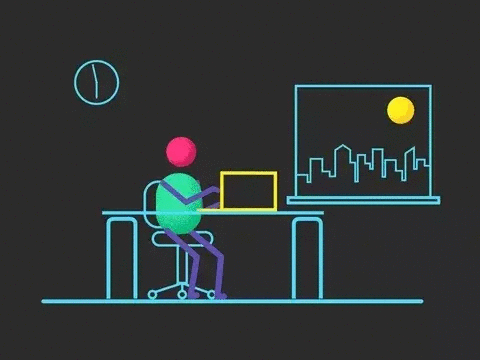Pomodoro Technique Calculator
Studying for exams or trying to be the best at your job doesn't always come easily. Sometimes you can't focus, other times you can't figure out how to organise your work to make the most out of your time. With the Pomodoro Technique calculator, we will show you how to schedule your time according to a famous productivity method. You will get a workday chart, and we will tell you how much time you will spend working and for how long you will be relaxing. Ready to start your productivity journey? Let's dive in!
It's never to late for self improvement! Check out these social media and TV alternatives calculator to find out how to better spend your free time.
What is the Pomodoro Technique?
There are many productivity methods out there. Among Getting Things Done (GTD), Don't Break the Chain, and Zen to Done (ZTD), the Pomodoro Technique is believed to be one of the best.
The Pomodoro Technique is a method based around 25 minutes working periods separated with breaks. As a university student, Francesco Cirillo - the creator - wanted to be as efficient as possible in the shortest possible time. He took a timer and came up with the Pomodoro Technique. Why pomodoro? In Italian pomodoro means a tomato. And Cirillo timed his working periods with a tomato-shaped kitchen timer.

At the core of the Pomodoro Technique is a 25-minute period of continuous work, known as a pomodoro. After the first, second, and the third pomodoro, there is a three to five minute short break. Once every four pomodoros you take a longer, 15 to 30-minute break. Cirillo suggests that you should not think about the time, it's best to use a timer, as you can therefore dedicate all of your brainpower to working. And that's it! Just choose a task, set a timer, and get to work.
Can't start your day without a big cup of hot coffee? Check out our coffee kick calculator to optimise your alertness!
Pomodoro technique - basic principles
The Pomodoro technique is meant to be simple. All you have to do is follow these six steps:
-
Write down your tasks.📝
-
Set a timer for 25 minutes. ⏰
-
Work, work, work! Try not to get distracted.👩💻
-
Put a checkmark next to each task you complete.☑️
-
Take a short break. Avoid grabbing your phone. Try doing some stretches, meditating, or making yourself a cup of tea.☕️
-
Take a long break every four pomodoros.🧘♂️
In his book , Cirillo also discusses how to make his technique more effective. He recommends creating to-do lists and deadlines. He also advises estimating how many pomodoros an individual project will take, so that you can accurately plan your work over a week or month.
How to use the Pomodoro Technique calculator?
While you are working during a pomodoro, it's important not to distract yourself. That's why it's not recommended to work from home - a place with a kitchen to clean, or laundry to do. It's better to go to a cafe or a library. But for most people procrastination is inevitable. Even with a determined timetable, we sometimes find ourselves scrolling through social media, or wondering what to eat for lunch. And then we ponder: What should I do now? Go back to work? Count this time as a break? For them, the Pomodoro Method only works if there is a strict schedule.

That is why we built this calculator! Just input the time you want to start working at and how long you want to work for, and our calculator will create a personalised schedule for you. Even if you get distracted for a couple of minutes in the middle of a pomodoro - get back to work! Don't beat yourself up if, at first, you're having trouble following the plan. Even productivity needs practice!
It's good to use more than one productivity method. The Pomodoro Technique helps with time management, but a timetable doesn't tell you which tasks to do first, and how to do them faster. Keep reading to find out other ways of improving your productivity!
How to be more productive?
There is more to be productive than managing your time. If you're tired or unmotivated, even the best method won't be sustainable. Here are some changes you can implement to improve your performance:
- Motivate yourself
Have a goal, make a vision board, read biographies, or watch interviews with successful people who inspire you. It's up to you to find what motivates you, but when you do, work will get easier.
- Sleep
Sleep deprivation can worsen your mood, memory, and performance. An irregular sleeping pattern is also connected to many heart diseases, obesity, and diabetes. If you'd like to know how much sleep you should get to be at your best, check out the sleep calculator.
- Declutter
Clean your workspace. It can be your desk, mailbox, or a to-do list. In a clean environment and with a clear goal, working will be more pleasant and effective.
- Form new, healthy habits
Becoming productive isn't an overnight process. Try making eating healthier, and getting a good night sleep, a habit. Maybe a morning or evening routine could have a positive impact on your every-day life? Choose a bike over a car. You don't have to change your whole life at once. If you don't drink a lot of water, start by drinking one glass of water every morning. Hydration has a massive impact on focus and energy levels. Remember: the key to success is steadiness.
- Stop multitasking
When multitasking, we tend to work slower and less efficiently. Focus on one task at a time. If you're working on a large project, break it up into smaller tasks. It will be less overwhelming, and it will be easier for you to start.
- Reward yourself
Find things that give you pleasure. It may be meeting with friends, going for a walk, or having a sweet treat. Next to your to-do list make a "reward list". After you complete a task, finish a project, or ace your exam, do something that will put a smile on your face. Maybe learn how to make perfect pancakes?
What is overlearning?
Imagine you had a perfect workday. All your tasks are completed, you didn't get distracted, had a healthy lunch. But you planned to work till 4 p.m., and you have half an hour left. You can either go for a well-deserved rest or... you can spend this time on overlearning, and thanks to that - have less work tomorrow! But what is overlearning and how do you do it?
Overlearning might come in handy when you are learning a new skill, practicing your presentation, or trying to remember countless definitions for an exam. We usually learn until we remember something and then go to the next topic. But show that overlearning might be a better way. Overlearning is when you're repeating an action even though you've already mastered it. Say, for example, you have to give a presentation tomorrow, and you're practicing what you're going to say. Instead of getting anxious the next day that you've forgot something, spend more time practicing the evening before, even when you think you have it at your fingertips. Practice makes perfect. More practice makes permanent.
Helpful resources

Working on this article, we used several interesting resources. Check them out!
FAQ
How many hours is 8 pomodoros?
8 pomodoros are 4 hours 40 minutes, considering your pomodoro is 25(work)-5(short break)-20(long break). Let's see how we can count it.
- Note the starting time and add 25 minutes of work.
- Add 5 minutes of break to it. It takes 30 minutes in total.
- Repeat this four times, and it is 2 hours.
- Now is the time for a long break, 20 minutes. This brings the total time to 2 hours 20 minutes.
- Repeat the entire process one more time.
- Now, you have another 2 hours and 20 minutes.
- Sum them together; you have 4 hours and 40 minutes.
If your work is done after the 8th pomodoro, you don’t count the last 20-minute break. Your total will be 4 hours and 20 minutes.
Does a pomodoro have to be 25 minutes?
It doesn't have to be, but it is suggested that a pomodoro be 25 or 30 minutes, followed by a 5-minute break, and a longer break after 4 pomodoros.
You can decrease the time to even 15 or 20 minutes if a person has a concentration or learning disability.
How many pomodoros do you need for a long break?
You need four pomodoros to take a rewarding long break. Each of your Pomodoro may be of either 25 or 30 minutes, separated by a 5 minute or less break.
Is the 90 20 rule a pomodoro technique?
It might seem so, but the 90-20 rule is not a pomodoro technique. This rule is another time management technique that suggests spending 90 focused minutes working and then taking a 20-minute break.
Whereas the pomodoro technique suggests spending 25 or 30 minutes focused on work and then taking a 5 or less than 5 minute break. But it rewards with a long break after 4 pomodoros.
Set a longer break at 9:55 am.
Set a longer break at 12:20 pm.
Set a longer break at 2:45 pm.
If you have any time left, continue working.